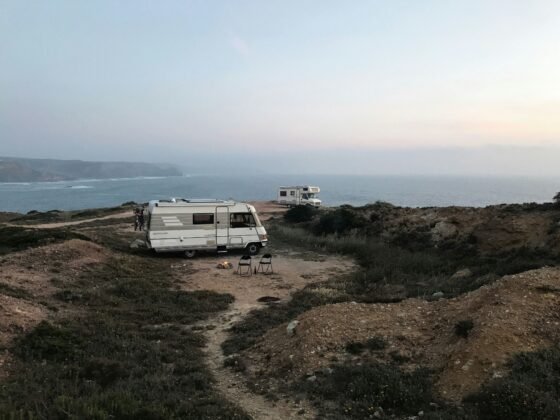While the savannahs of Maasai Mara and the peaks of Mount Kilimanjaro are popular attractions, Kenya is also home to a variety of lesser-known destinations that offer unique cultural, historical, and natural experiences. If you’re looking to explore beyond the traditional safari routes, here are some alternative tourist destinations in Kenya that promise unforgettable adventures.
1. Lamu Island: A Tranquil Coastal Escape
Lamu Island, part of the Lamu Archipelago on Kenya’s northern coast, is a hidden gem that offers a serene escape from the hustle and bustle of mainland life. Steeped in history, Lamu Town is a UNESCO World Heritage Site and one of the oldest Swahili settlements in East Africa. The town’s narrow streets are free of cars, with donkeys serving as the primary mode of transport, preserving the island’s old-world charm.
Visitors to Lamu can explore ancient mosques, wander through bustling markets, and relax on the pristine beaches that line the island. The architecture, a blend of Arabic, Persian, and Indian influences, offers a visual feast, while the friendly locals provide a warm welcome. For those seeking a luxurious stay, several boutique hotels offer elegant accommodations with stunning views of the Indian Ocean. A visit to Lamu is perfect for travelers interested in history, culture, and a slower pace of life, making it an ideal complement to a Kenyan luxury safari.
2. Lake Turkana: The Jade Sea of Africa
Lake Turkana, often referred to as the “Jade Sea” due to its striking turquoise color, is the world’s largest desert lake and a UNESCO World Heritage Site. Located in Kenya’s remote north, this expansive and rugged region is not commonly included in typical safari itineraries, but it offers an extraordinary experience for adventurous travelers.
The area around Lake Turkana is home to several indigenous communities, including the Turkana, El Molo, and Rendille people, who have preserved their traditional ways of life for centuries. A visit here provides a rare opportunity to engage with these communities, learn about their customs, and experience their rich cultural heritage.
Lake Turkana is also known for its unique wildlife, including large populations of Nile crocodiles and a variety of bird species. The volcanic landscape surrounding the lake, with its striking rock formations and craters, adds to the area’s otherworldly beauty. Exploring Lake Turkana is a journey into one of Africa’s most remote and untouched regions, offering a stark contrast to the more frequented safari destinations.
3. Chyulu Hills: The Green Hills of Africa
The Chyulu Hills, described by Ernest Hemingway as the “Green Hills of Africa,” are a volcanic mountain range located between Amboseli and Tsavo West National Parks. These rolling green hills are less visited than other parks in Kenya, making them an ideal destination for those seeking solitude and breathtaking natural beauty.
The Chyulu Hills are characterized by lush forests, open savannahs, and dramatic volcanic landscapes. The area is home to diverse wildlife, including elephants, leopards, giraffes, and numerous bird species. The hills also offer panoramic views of Mount Kilimanjaro, making it a fantastic spot for photography and nature walks.
One of the unique features of the Chyulu Hills is the Leviathan Cave, one of the world’s longest lava tubes, which is a fascinating site for exploration. For those interested in sustainable tourism, the Maasai community operates eco-lodges in the area, providing an authentic experience while supporting local conservation efforts. The Chyulu Hills are a peaceful alternative to the busier parks, offering a unique blend of wildlife, culture, and stunning scenery.
4. Rusinga Island: A Historical and Cultural Haven
Rusinga Island, located in Lake Victoria, is a small but significant destination that offers a rich cultural and historical experience. Known as the birthplace of Tom Mboya, a prominent Kenyan independence leader, the island holds a special place in Kenya’s modern history.
Visitors to Rusinga Island can explore Mboya’s mausoleum and learn about his contributions to the country’s struggle for independence. The island is also known for its archaeological significance, with several prehistoric sites that offer insights into the region’s ancient history.
Rusinga Island is a birdwatcher’s paradise, with hundreds of bird species inhabiting the island and its surrounding waters. The island’s serene environment, coupled with its cultural and historical attractions, makes it a perfect destination for those looking to explore Kenya’s lesser-known but equally fascinating regions.
5. Aberdare National Park: A Misty Mountain Retreat
While Aberdare National Park is not as famous as Maasai Mara or Amboseli, it offers a unique and enchanting experience that sets it apart from other parks. Located in the central highlands of Kenya, the park is characterized by dense rainforests, misty mountains, and deep ravines.
Aberdare National Park is home to a variety of wildlife, including the rare and elusive bongo antelope, as well as elephants, leopards, and hyenas. The park’s cool climate and lush vegetation make it a stark contrast to the dry savannahs typically associated with Kenya safaris.
One of the highlights of Aberdare is the chance to stay at the historic Treetops Lodge, where Queen Elizabeth II was staying when she learned of her ascension to the British throne. The lodge offers a unique vantage point for wildlife viewing, as animals frequently gather at the waterholes below. For those seeking luxury and history in a serene natural setting, Aberdare National Park is an excellent alternative to the more popular safari destinations.












